Book review: The Lion: Son of the Forest
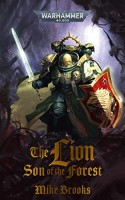
Book: The Lion: Son of the Forest
As my Space Marines favourite chapter (and most miniatures) are Dark Angels, I picked The Lion: Son of the Forest out of curiosity to learn about the return of their primarch. I also have the miniature pending assembly and painting, but that's another story, let's focus on the novel.
One remark that I want to do is that I haven't read Arks of Omen: The Lion, but as far as I understood, the Son of the Forest novel happens before. The Lion awakes at The Rock, it is transported to the place where Son of the Forest begins, and I'm guessing that where the novel ends is more or less where the Lion "officially" reappears.
I also did not know about the Imperium Nihilus/Dark Imperium, caused by the Great Rift. It is a good trick by Games Workshop to make things advance at a different pace, by having half of the galaxy now blind to the Astronomican light.
With that out of the way, let's go with a small, spoiler-light review.
The Lion is back! I'm happy to see my beloved Dark Angels have their lore finally advance, both regarding having the primarch again, and his attitude towards The Fallen.
The novel is a decent read, with good amounts of action, and entertaining enough that I read it quickly. It didn't felt boring at any point, opens the right amount of plot threads and gracefully closes them (except a main question, as I'll mention), and it mostly feels appropriate of what you would expect from a super-human being that it's still disoriented after so much time "out".
Two points felt unsatisfactory to me. First, we are given zero reasoning as for why the Lion awakes, when it does and where it does - it simply happens, and it is what it is. And the second one is that I feel that the author went too far in giving so distinctive personalities to some of the fallen characters. I'm sorry but I don't buy the image of a Space Marine becoming a peaceful hermit, chasen by Dark Angels or not.
All in all, not a bad return, although neither a grandiose one. And the multiple open questions, like how he'll reintegrate in the Imperium, or what will happen regarding Luther or the mysterious Cypher, leave the door open for multiple future novels, which is always good.
Book review: Silo - The Wool Trilogy
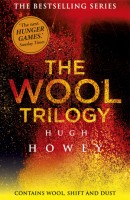
Book: Silo - The Wool Trilogy
I did not know about this trilogy until I saw the first season of Apple TV's show, Silo, more than a year ago. After watching it, I got interested and picked up the book. I don't want to undervalue the show, as the first season is really good, but as it very often happens, the book is richer, slightly different, and I'd recommend starting with it instead of the series. I also stopped watching it midway through the second season, so I don't know if the divergences from the book become more accused, or stays mostly faithful to the source material.
With that out of the way, here comes the review itself. I really enjoyed this book. The apocalyptic, maybe sci-fi but not unsure if really so, setting; unsettling and cruel at times but not in excess (as could have very easily been the case). With well defined characters, who, for the most part, fit nicely in the story, and at times surprisingly leave it. With a narrative that dares to be different in the second book (I won't say why to avoid spoilers) to then come back with a vengeance in the final book. With sub-stories and variety, but not too much that you get lost on the main one.
If I had to mention something to improve, I have two tiny points: - A few characters feel like they are going to have more weight, and then they fade out into a very secondary role. This is one point that the TV show seemed to want to address differently (again, no spoiling). - The ending felt a bit abrupt: So much happens before, and then it ends a bit suddenly... too quickly without much detail.
In summary, a ~1300 pages great science-fiction tale, apt even for non sci-fi fans.
Tags: Books Science-Fiction
Book review: Art & Arcana: A Visual History (Dungeons & Dragons)
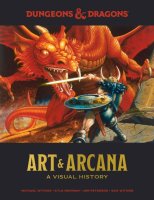
Book: Art & Arcana: A Visual History (Dungeons & Dragons)
August has been for me the Dungeons & Dragons themed month. After the Lore & Legends book, I picked another history lesson book: Art & Arcana. As the title hints, the main topic is about how D&D art and style has changed during on each edition; From the original, black and white and a bit amateurish drawings, to the astounding coloured depictions of adventures, adventurers, and monsters of the later editions.
One thing that stands out when you read the book, is that there is a lot of information. It is not a mere visual journey, and even focusing only on the textual content, I feel the quality and depth of it to be superior to Lore & Legends. There are so many interesting stories and details of the evolution of TSR, its illustrators, the art direction... I went for it because of the drawings, but it was a pleasant surprise to find so much content.
The illustrations are spectacular and, of course, the main focus. Being able to see all five evolutions of many creatures, book covers, the TSR logo itself, even some maps! Going from clearly hand-drawn irregular maps to the ultra-detailed and dense most recent iterations is such a joy. Learning the fun source of quite a few monsters (spoiler: plastic children toys), and then watching how they evolved into more serious and colourful depictions, is also very cool.
I've always been drawn into D&D because of its amazing book covers and incredible drawings, and this book contains the reason why. Moreover, In my case I began with the 2nd edition and its more professional but still mostly mono-color images, so experiencing how much everything has evolved, and expanded, and matured, was very fascinating.
A remarkable reference book.
Tags: Books Dungeons & Dragons Reviews
Book review: Lore & Legends (Dungeons & Dragons)
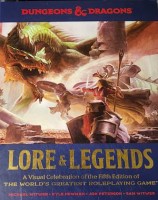
While I Began my journey into RPGs with Lord of the Rings (Middle-earth Role Playing 2nd edition, to be more precise), its rules were far too complex and full of tables for a child. Then, one day my father came back from a trip to the USA, and brought me the Dungeons & Dragons 1991 boardgame, and that changed everything: With easy to learn rules, it provided a smooth introduction to the world of Dungeons & Dragons, opening my appetite of more; 2nd edition DM and Player books, and the Monster Compendium came after. But I would end disconnecting from the role-playing game after the 3rd edition, playing a lot of D&D-based videogames but not a single RPG session. And, since then, I have not played again (for various reasons). During (and after) the pandemic, I tried to convince my friends to play something online, to try some VTT (Virtual Table-Top) systems with any fantasy system (D&D or not), but to no avail.
And now, fast-forward to 2024, me visiting a local store, and finding the Lore & Legends book: A huge +400 pages book, full of images and drawings, indeed celebrating the 5th edition, but doing so by going back to the roots of the game: Each book, adventure module, setting/universe mentioned, explained from the first incarnation to the latest edition version. With abundant drawings, limited editions and associated merchandise (collectibles, miniatures, ...), I had a great time reading about the journey of the game. And I learned a lot, from the origins of the Dark Sun setting (influenced by Mad Max movies), to my surprise that the iconic Ravenloft module was created in the early 80s, it is full of details and gorgeous full-page pictures.
Regarding the pictures, not only we see some of the old ones, but I think that all the 5th edition books/modules detailed contain uncropped/"expanded" versions of the cover images, which is spectacular as at times, there is a significant portion of the drawing that you don't see in the cover.
While the text contents are of course interesting, what really got me spending "extra" time when reading were the images... I had forgotten how detailed and incredible they are. And this brings me to the less good part: For a book that goes through visual history, at times it feels doing less justice than it should: An overabundance of pictures from famous real-world folks, YouTubers, and celebrities; Many pictures of the WizKids not-really-great plastic miniatures (their painting being from average to, very often, mediocre); And a lot of emphasis on the latest digital era, with live role-playing sessions via streaming, YouTube, Twitch, and the like. It is good to know, but I'd rather have more images from the book contents, or more cool drawings, instead of the 6th photo of some celebrity during his module-related precisely timed campaign game session.
Don't get me wrong, it is still a great title, and feels to me as a D&D equivalent of a history book. It so happens that I got my hands on another title Dungeons & Dragons: Art & Arcana: A Visual History, and despite being more focused (theoretically) on the art, this second book contains at times a deeper and more interesting history, which makes me feel that Lore & Legends should have been more ambitious and content-rich.
Tags: Books
Book review: Children of Dune
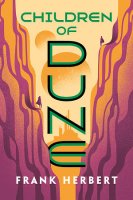
Book: Children of Dune
Note: I can't write about this title without spoilers from the previous ones, so jump directly to the last paragraph if you wish to avoid them.
The third book of the Dune series, Children of Dune happens 9 years after Dune: Messiah. Blind and no longer with premonition powers, Paul went to the desert to die. His sister Alia is now in command, but something is not going well, both inside her and in the imperium. Plots and conspirators are everywhere. Dune is now advanced in the terraforming efforts, with some areas quite green, rains, and Fremen are starting to become used to water no longer being a scarce resource.
Paul and Chani twins, Leto II and Ghanima are 9-year-olds with an incredible intelligence, fully aware that something is amiss with Alia, and that they must do something to regarding their aunt, the Atreides empire, and maybe even Arrakis.
This book switches the main protagonist obviously from Paul to his family. We will learn about Alia's "issues", but the real main characters are the twins. This book also departs a lot from a "mild" sci-fi setting (worms, ghoulas and prescient powers aside), to fully embrace the fiction part. Without spoiling much, the premonition and inner voices powers that both Alia and Paul's children have go way further than the powers that Paul had, and there will be other plot twists and events that will surprise you.
The first half of the book is relatively calm, pretty much focused on politics, conspiracies and developing the characters. But, once you pass the first, half it jumps into a series of events that made me spend some long night sessions reading on and on, wanting to know what would happen next. Definitely more science-fiction than the previous titles, and, in my opinion, highly recommended.
Tags: Books
- ← Newer Articles Page 1 / 17 Older Articles →